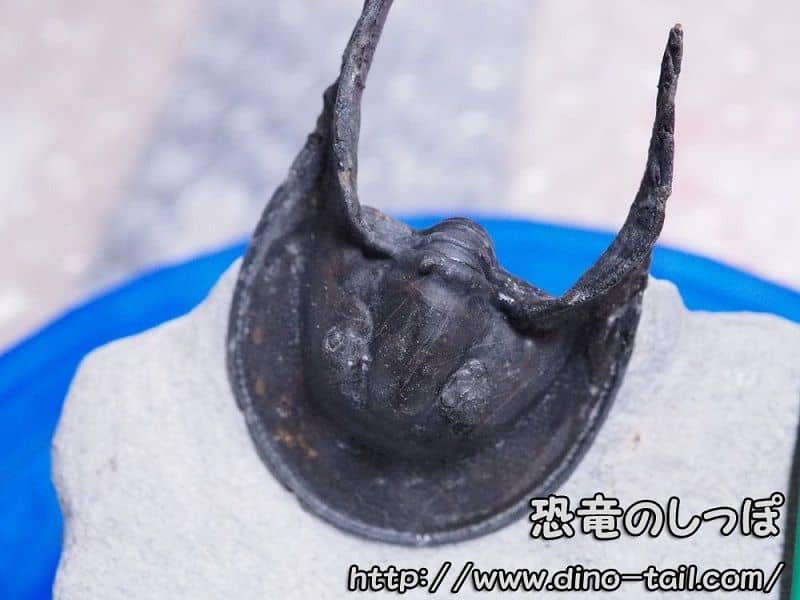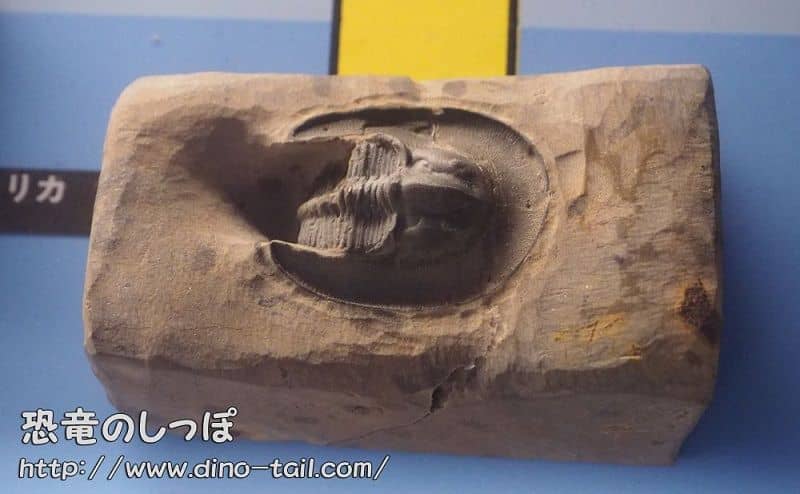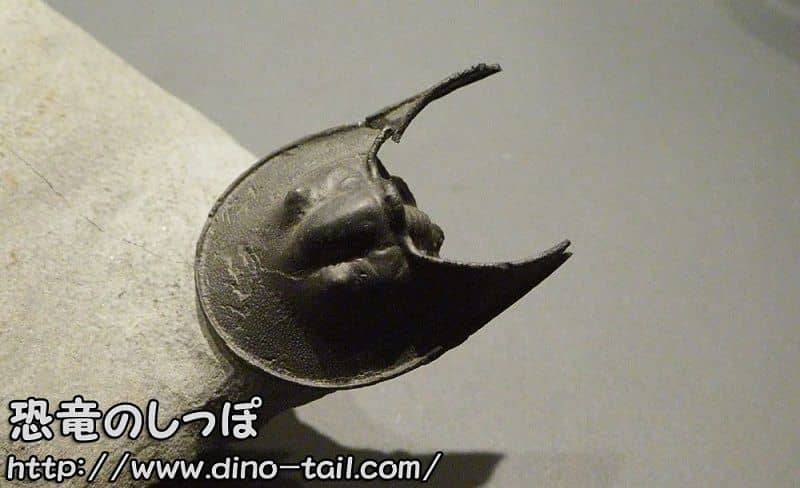About Harpes
| Scientific Name (Genus) | Harpes |
| Meaning of Name |
Sickle
From harpe (sickle) [Latin], due to the curved shape of the head. |
| Classification | Trilobita, Harpetida |
| Period | Middle Devonian |
| Sub-classification / Species Name |
Harpes kylindrorhachis
Harpes macrocephalus Harpes perradiatus Harpes ungula Harpes venulosus, etc. |
| Year of Paper Publication | 1839 |
Features
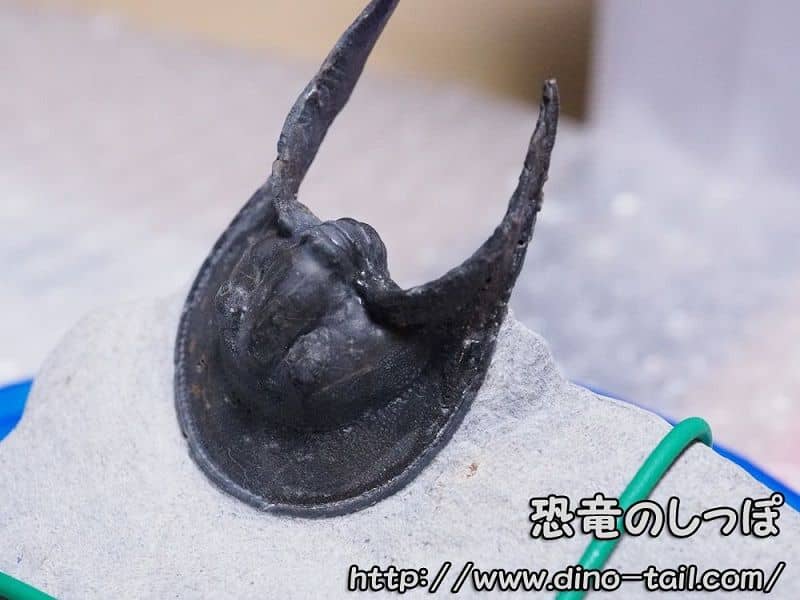
From Morocco
The genus Harpes was once classified within the order Ptychopariida, but is now classified in its own independent order, Harpetida.
It has a wide, hat-brim-like extension around its head. It looks like a helmet from a robot anime.
It lived during the Middle Devonian (about 416 million to 359 million years ago). It is also used as an index fossil.
Fossils from Morocco are famous, but they are also found in Germany.
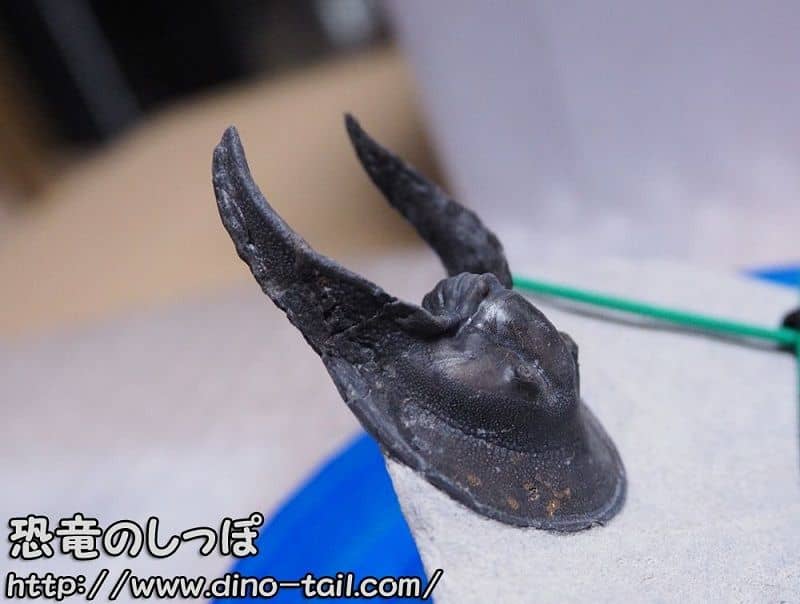
From Morocco
My Collection
The Mystery of the Helmet: An Amazing Sensory Organ
The role of Harpes's most peculiar "hat brim" (preglabellar field) was a mystery for many years. However, recent research has shown that it may have been a very advanced sensory organ.
Not a "Sieve," but a "Sensor"
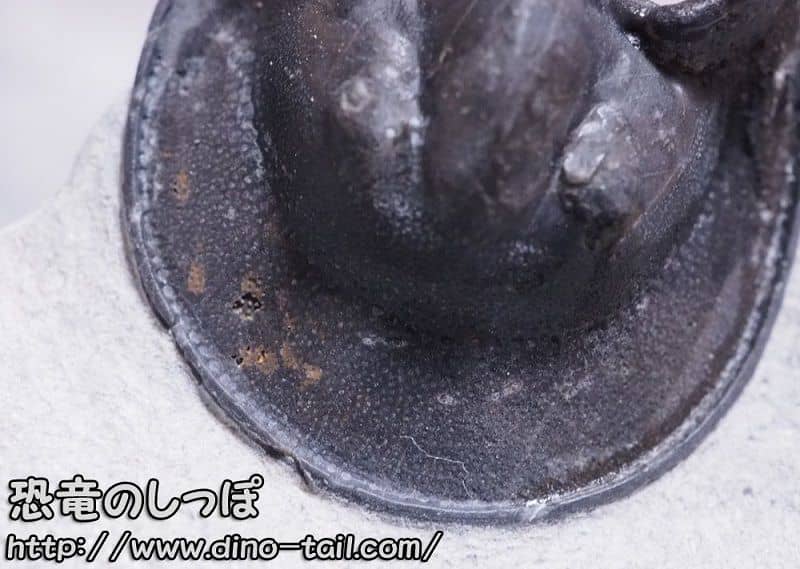
From Morocco
My Collection
The brim has many small pits.
It was once thought that the countless microscopic pits on the brim were a "sieve" for filter-feeding on mud. However, the prevailing theory now is that each of these pits had a sensory hair, functioning as a vast sensor array .
It is believed that this sensor allowed Harpes to sensitively detect water currents, the slight vibrations made by prey and enemies, and chemical substances in the water.
Master of Ambush
By combining this advanced sensory organ with its small eyes located high on the center of its head, Harpes seems to have established a unique ecology. It may have been a "master of ambush," usually burying most of its body in the sand and mud on the seabed, with only its eyes and "sensory brim" exposed, waiting patiently for prey to pass by or quickly detecting the approach of enemies.
Discovery and Description
The genus Harpes is one of the oldest known trilobites, first described in 1839 by the German paleontologist August Goldfuss. Initially, it was considered a subgenus of another trilobite, but subsequent research revealed that it had such unique features that it was classified into its own independent order.
Fossils are known for being found in a very beautiful state, especially from the Devonian strata of Morocco and Germany.
Harpes Stamp and Fossil Gallery
